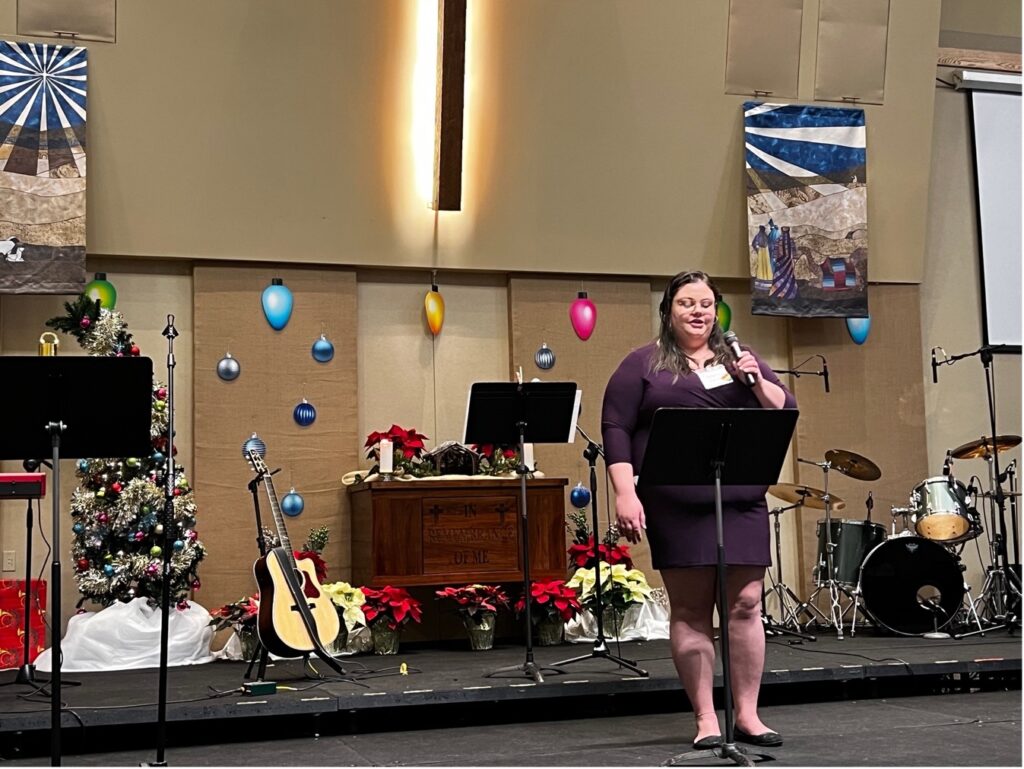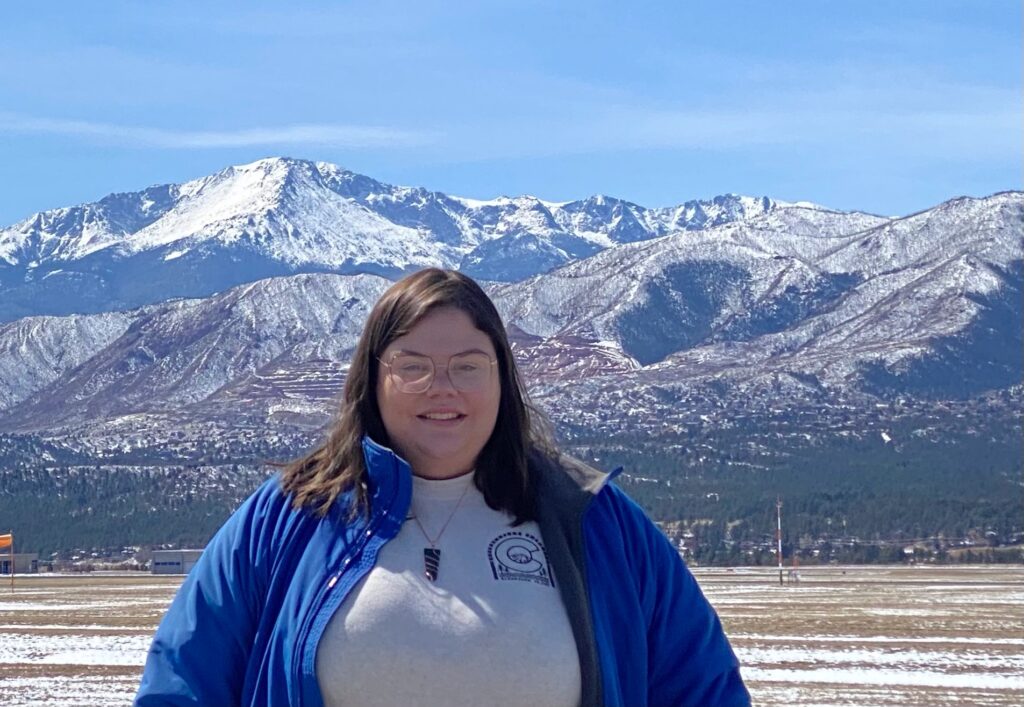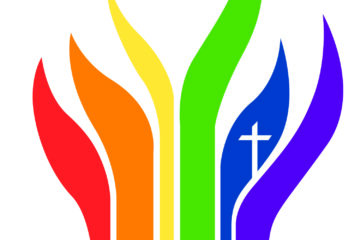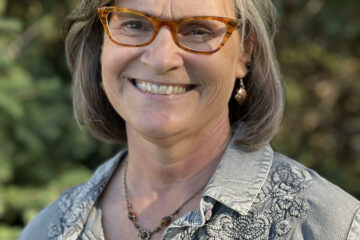The wilderness and the dry land shall be glad,
the desert shall rejoice and blossom;
like the crocus it shall blossom abundantly,
and rejoice with joy and singing.
Isaiah 35:1-2
Rebecca Eyrick is part of the family ministry team at First United Methodist Church. A senior at Purdue University studying Environmental Public Health, Rebecca has a passion for ecological restoration and community education. She delivered a sermon based on Isaiah 35:1-10 on December 11, 2022 at First Church.
We are grateful for the passion and leadership Rebecca and the FUMC family ministry team brings to our work at First Church. It is a reminder that our young people will lead the way. In the words of Isaiah “A little child shall lead them…”. We thank Rebecca for these prophetic words of wisdom.

Have you have ever seen the 1995 animated Disney Pocahontas movie? Looking back, it has its problematic themes with colonization and mis-portraying the entire situation, but when I was a kid, it was my favorite movie. It was my favorite for specifically one part: when Pocahontas had to make a big decision and didn’t know what to do, she would go to an old willow tree she called Grandmother Willow. Grandmother Willow would come to life and tell Pocahontas to listen with her heart to understand the best decision to make. See, I loved this part of the movie because I related to it in a way. I legitimately thought, as a child, that I could talk to the trees. I would whisper something and the wind rustling through the leaves and the branches waving would be the trees talking in response. Grandmother Willow was all the evidence I needed that I was actually talking with trees.
You might know or recognize me from my work here at FUMC in children’s ministries, but I wanted to tell you a little bit more about myself. I’m 21 years old and from LaPorte, Indiana. I’m a born-and-raised Methodist from a church that my family has attended for generations, and I’m currently a senior at Purdue studying environmental public health. I was raised on a farm on one side of my family and the other side of my family is made of environmental conservationists, so environmentalism is somewhat in my blood. Ultimately, that’s why I’m standing here in front of you today.
If there’s one thing I learned growing up in a countryside Methodist church attended by many farmers, it’s that our faith and the environment are deeply intertwined. Our text today talks about a passage from the prophet Isaiah that describes a world before and after God comes to Earth in the form of Jesus. It centers on environmental themes, “the wilderness and the dry land shall be glad, the desert shall rejoice and blossom,” “the thirsty grounds (will become) springs of water.” It centers on the fact that God’s creation will rejoice with the coming of Christ. Not just creation as in humans, which is the obvious, we all know that we will one day be filled with the spirit. But the land itself will be filled with love.

Since the year 1880, global temperatures have increased by 0.14 degrees Fahrenheit per decade, but since the 1990s, that increase has doubled. This year, by the end of October, 44% of the United States had fallen into extreme drought. ⅔ of Europe fell under extreme drought in the first half of the year, and Africa faced the worst drought it has had in 40 years, putting 22 million people at risk of starvation. Ecosystems are falling out, and pollinators are falling under extinction or endangerment. We see cases like the case of Flint, where drinking water became a commodity of privilege, or cases that show us the long lasting impacts of redlining, where minority and disadvantaged neighborhoods struggle with higher levels of pollution, less access to resources, more food deserts, and less safe and clean public space.
Looking at the text, and for some context, the previous chapter in Isaiah is talking about the vengeance of God. It talks about death coming upon the nations, bloodshed, these themes of scavenger animals and symbols of death dwelling in the land. Chapter 35, our chapter today, begins to flip this narrative and discuss the salvation of God. Essentially, that the beloved children of God will experience salvation from the aforementioned world of despair, and bring them into a world of joy and, really, healing.
Verses 5 and 6 talk about various forms of healing: the blind will see and the deaf will hear and the lame will walk. These verses bring into light the idea of an active God coming to right wrongs and make everything just. Walter Brueggemann, a very well-known old testament scholar and theologian, describes that there are two ideas here that are tied together:
- The restoration of God’s honor and
- The rehabilitation of God’s people
The two cannot be separated. Additionally, these verses set the precedent for what we see Jesus fulfill in Luke chapter 7, when it is described that the blind now see, the deaf now hear, and the lame now walk. Jesus is setting right what God commanded, correcting the governance of the land for which Judaism had long awaited.
The verses continue back to environmental themes, including the idea that the land will become full and healthy, with water streams overtaking every symbol of death described in the previous chapter. What I find interesting about these verses is the idea that human survival and salvation stems from the environment in which they find themselves. That without these ecosystems flourishing, without growth of plants and animals, God’s work will not be complete.
The rest of the verses center on the joy of God’s people as they enter into Zion. They rejoice, and the land rejoices, and God rejoices. This story centers around this joy, pure joy, that will overcome the earth. Water will gush forth in the wilderness, grass and reeds and papyrus will grow, no evil creatures will be found, only the righteous. The joy will overcome these people, and they will walk into eternal peace with gladness and joy.
Of course, we are working towards this joy. True salvation comes at the hand of God, but in the meantime, we’re working on it. Conservation and preservation centers have worked to decrease elimination of key species and keep ecosystems intact. Small steps are being taken towards renewable and clean energy: for example, renewables are set to produce more energy in 2022 than coal for the first time. Technology is ever improving to find solutions for drought, plastic waste, pollution, and high emissions. For example, France banned certain domestic flights in favor of train travel to reduce emissions, bike busses are being created to get school children to school safely without the need for regular school busses, researchers have figured out a way to make homes out of wood fibers to make homes more sustainable, new technology in Australia has been able to remove toxic chemicals from rainwater, new farming methods are able to reduce emissions, and power outages in Nigeria are being overcome through solar lamps made from e-waste. And, people everywhere are becoming aware of the dangers of environmental negligence. People like Greta Thunberg and Amariyyana Copeney (a.k.a. Little Miss Flint) are raising awareness and taking action to overcome climate change, organizations like Sunrise and Citizens Climate Lobby (both of which have Purdue chapters) are working to advocate for climate-safe legislature. People are starting to create initiatives to bring resources into disadvantaged communities, research is exposing the dangers we face, and the climate missions started decades ago are being carried on by a new generation, this generational discipleship something we also see time and time again in the Bible, such as the people of Moses in the promised land.
This is where we come into play. It’s no secret that our community of West Lafayette and Indiana at large have their fair share of struggles. When you look around, environmental justice issues are not hard to find. Indiana has the highest proportion nationally of blue-collar jobs, meaning there are tons of factories and production companies here and people work with a lot of heavy machinery. These can cause emissions of gas and other particles that may be extremely harmful to individuals and their communities.
I’ve calculated the church’s carbon footprint, made efforts to improve recycling here, and started working towards some larger projects that I hope will carry on even after I graduate and am no longer working here. But why does any of this matter in the first place? I mean, we all are aware of the climate crisis going on around us, but what does that have to do with our church?
What’s the answer to that?
You see, in our passage and throughout the Bible, God is asking us to be disciples. To follow God into the everlasting joy we are promised as God’s people. A cornerstone to this discipleship is environmental stewardship. We are called to take care of God’s creation, to not let it be destroyed as seen in the text with bloodshed and environmental disaster. We are called to be caretakers of the Earth, to get as close to that lush world of natural wonder as we can.
The world is already a beautiful and glorious thing. It is living and worshiping alongside us. We are not to treat it as a simple tool, but as guests to God’s wonder. We must take steps, even in our own small ways, to take our part in creating change and love through the environment. Help make a system for gardens in the church that can be spread to other churches in the area, invest in composting, give your time and resources to what you think may be the best choice, whether that be something as big as a community garden or solar panels, or something as small as using reusable dishes Only through this are we really making accessible contributions to our mission of discipleship. Because in my time at this church, I know that we care. And we love. And we want to do our best to show god’s love as much and as often as we can. That is what First is. That is what being a child of God is. This is who we are.



0 Comments